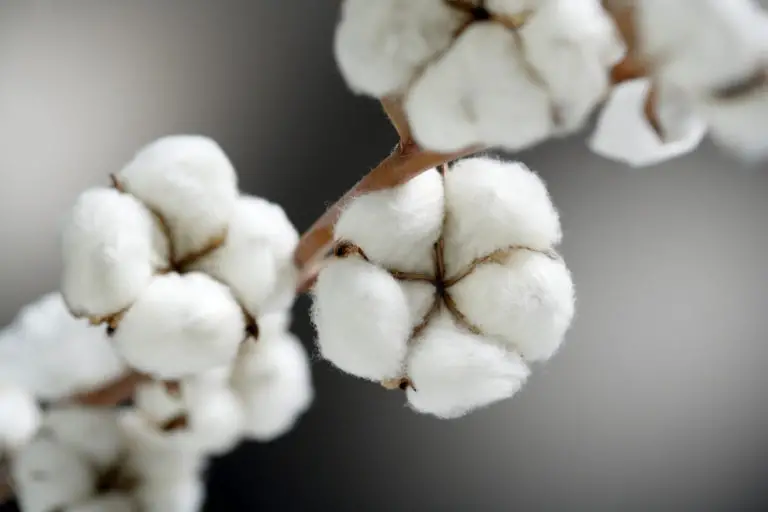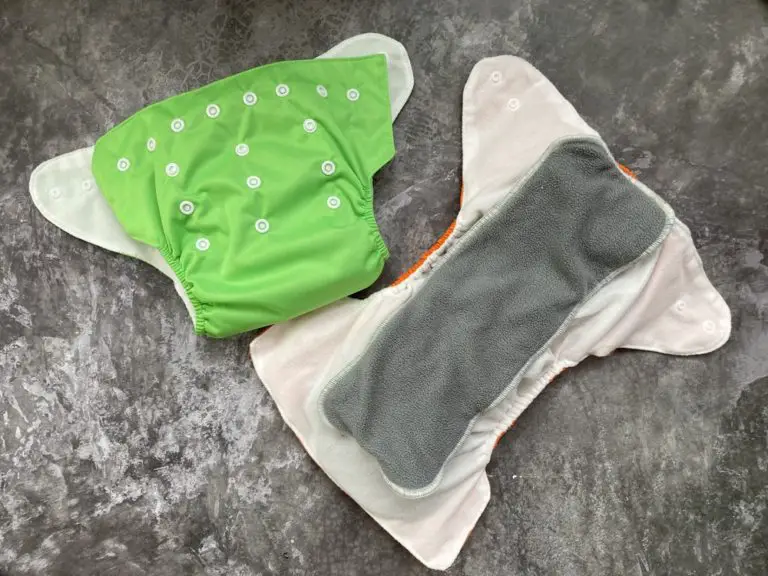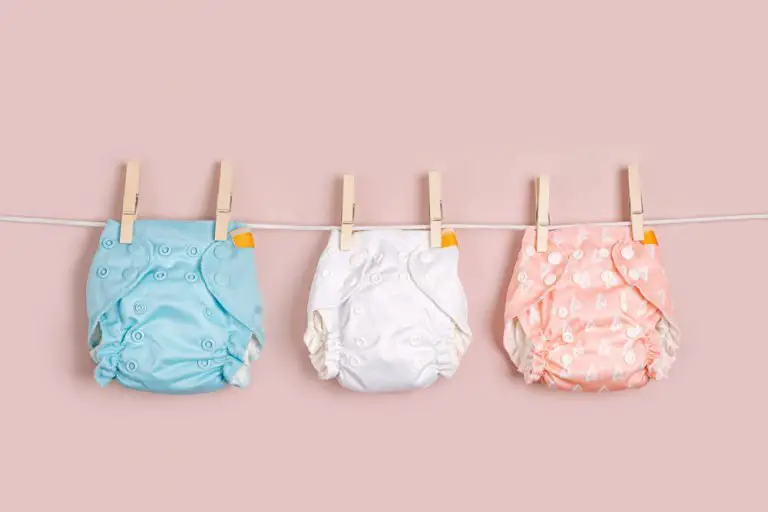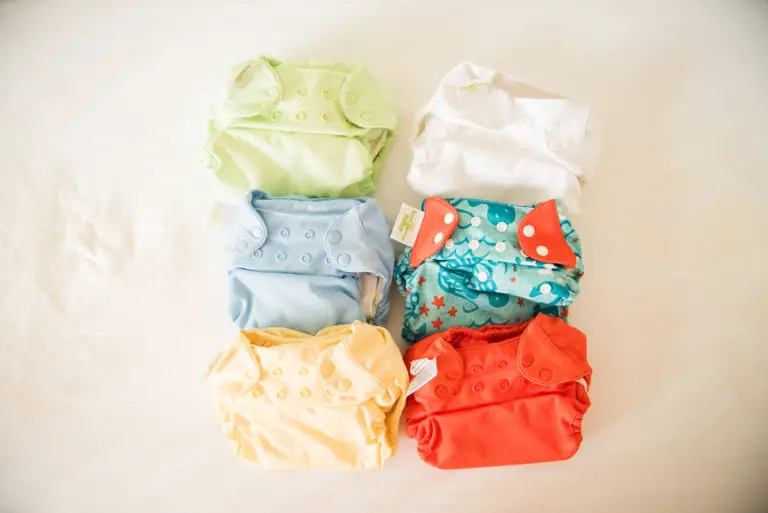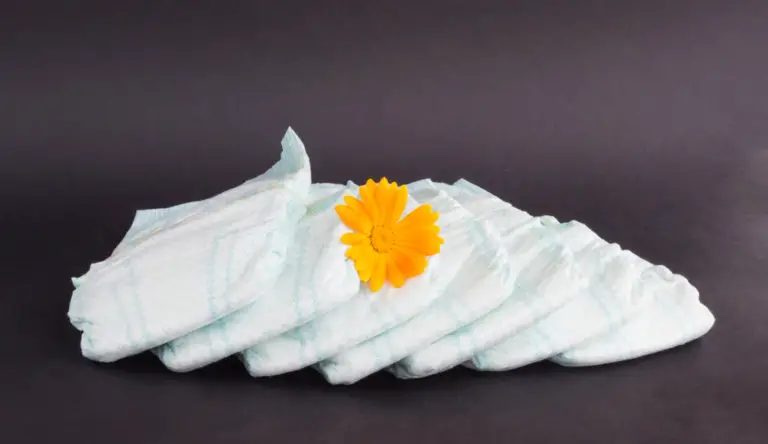Polyester Fabric: Properties, Pricing & Sustainability (2024)
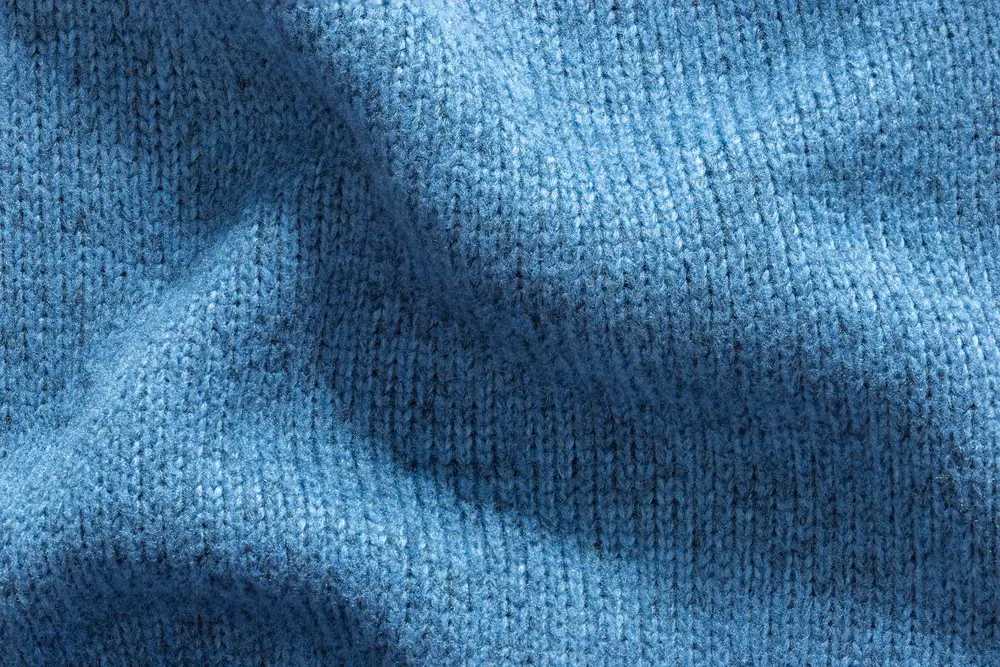
Polyester fabric is a manufactured material that is used commonly worldwide. It is very popular because it is lightweight, breathable, and moisture-wicking. Another perk of polyester is that you can wash it at all temperatures. Polyester is used to make pants, dresses, socks, shirts, upholstery, and cloth diapers.
Fabric Profile
Fabric Name: Polyester
Synonyms: Polyethylene Terephthalate, PET, microfiber
Fiber Type: Synthetic fiber
Breathability: Very breathable, lightweight
Absorbency: Moisture wicking and water-resistant
Characteristics: Wrinkle-resistant, lightweight, dries quickly, breathable
Washing Requirements: All water temps are OK
Common Uses: Pants, Dresses, Socks, Upholstery, Cloth Diapers
Heat Press Temperature: 270 F
Avg. Price: $6-$15 per square yard
Certifications: OEKO-TEX Standard 100, Global Recycle Standard
- What is Polyester?
- Types of Polyester Fabric
- Polyester Fabric Characteristics
- Downsides of Polyester Fabric
- Common Uses of Polyester Fabric
- Polyester Fabric Pricing
- How is Polyester Made?
- Where is Polyester Manufactured?
- Polyester Fabric Environmental Impact
- Polyester Fabric Certifications
- History of Polyester Fabric
- Polyester Fabric Alternatives
What is Polyester Fabric?
Polyester fabric is a synthetic material that is made by combining carboxylic acid and alcohol. Put simply, polyester material is a flexible, durable fabric.
Some of the characteristics of polyester that make it so well-loved are that it is durable and wrinkle resistant. As a result, polyester fabrics are used worldwide to create a wide range of products.
Polyester textiles were first introduced in 1941 by chemists John Rex Winfield and James Tennant Dickson. In the 1970s, polyester clothing became extremely popular. People loved this new fabric because it retained its shape well, didn’t wrinkle, and didn’t require dry-cleaning, which means busy people could wash and dry it at home.
A durable, easy-care fabric was highly appealing to young mothers who began returning to the workforce in more significant numbers in the 1970s and 80s. One of polyester’s other perks is that it is quick-drying, making it a popular choice for outdoor wear.
Polyester vs. Cotton vs. Nylon
Polyester, cotton, and nylon are three of the most common textiles used in clothing. The main difference between polyester and cotton is that polyester is a manufactured fiber, and cotton is natural.
Both polyester and cotton are breathable, but cotton is more so. Both fabrics also wick moisture away, but cotton is the winner again because while polyester wicks moisture away, it can feel sticky when wet.
When it comes to polyester vs. cotton, cotton is more likely to wrinkle and doesn’t hold its shape as well, which makes it an excellent fabric for traveling.
Nylon is also a synthetic material with elasticity and is commonly used in workout clothing due to its flexibility. In addition, nylon has a silky and smooth texture and has only been around since World War II.
When considering polyester vs. nylon, the most significant difference between nylon and polyester is that nylon is not very breathable and can cause skin rashes on some people. Nylon, however, is very durable and doesn’t shrink or wrinkle when washed.
Types of Polyester Fabric
There are three main types of polyester material: PET, PCDT, or Poly-1 and yarn. PET or Polyester ethylene terephthalate is the most popular type of polyester. Poly-1 is more resilient than PET and has more elasticity than PET. Yarn is the third type of polyester; this poly fabric is made by blending several different materials.
Plant-Based Polyester
Much polyester is plant-based polyester which actually sounds misleading. When people think of plant-based fabrics, textiles like cotton and bamboo come to mind.
The plant materials in polyester come from ethylene which is derived from petroleum.
More recently, some fabric manufacturers have been using ethylene sources such as cane sugar. One of the biggest benefits of plant-based polyester is that it is biodegradable because, unfortunately, most poly cloth is not.
One downside to plant-based polyester is that it is more costly to manufacture, and at times it is less durable.
Ethylene Polyester
Almost all polyester is made from ethylene. Ethylene polyester or PET is the most common type of polyester. Ethylene glycol interacts with different fibers at high heat to create a polymer that is stretched and formed into fibers.
In most cases, these polyester fibers are spun into yarn that is then used to make different textiles. PET is also used to make plastics and containers, and even electronic components. When spun into a fiber, it is used as a fabric to make clothing and fabrics.
PCDT
PCDT or Poly-1 polyester is very similar to PET in the way it is made. However, PCDT is more resilient and durable than PET and is typically preferred in heavy textiles such as upholstery or curtains.
Unlike PET, PCDT is not typically blended with other fabrics. A major benefit of using PCDT polyester for upholstery is that it is stain-resistant and wrinkle-resistant. Leather couches can be soft and cozy, but when a glass of soda is spilled upon, you can ruin it. In addition, polyester fabric is much more durable for furniture, especially for families with children.
Polyester Fabric Characteristics
Many outstanding polyester qualities make it such a popular fabric worldwide. Chief among the top polyester fabric properties is that it is durable. Polyester is also very lightweight, moisture-wicking, and resilient.
Another perk to polyester is that it holds its shape well, so it is an excellent fabric for clothing and workout wear, especially when blended with cotton. In addition, a cotton-poly blend is very breathable and wrinkle-resistant.
Cotton-poly blends are ideal for children’s clothing because it is softer than 100% polyester, but it resists wrinkles and stains better than 100% cotton, plus it’s tough, so it is less likely to rip and tear.
Because of its durability and water resistance, polyester is also the perfect fabric for outerwear and bags, and backpacks.
Microfiber polyester is highly absorbent and soft, which makes it great as a cleaning cloth. Microfiber inserts are also ideal for cloth diapers because they are absorbent, but they must be used with another insert, as microfiber shouldn’t go directly against your skin.
Downsides of Polyester Fabric
While polyester has many perks, it has a few drawbacks. First, 100% polyester can be very coarse. This is particularly the case with cheaply made polyester, which can cause rashes on individuals with sensitive skin.
Additionally, synthetic polyester is not biodegradable, so it clogs up landfills and is not environmentally friendly. Finally, polyester fabric requires a lot of chemicals to make, which pollutes the atmosphere.
While polyester is breathable, it is not as breathable as other fabrics, so it is not recommended for bedding materials or undergarments.
Polyester is also a moderately flammable material, so while it isn’t likely to catch fire quickly, burns sustained while wearing polyester tend to be more severe.
Common Uses of Polyester Fabric
Because of polyester properties, it is commonly used in outerwear, clothing, socks, jackets, pants, and even hats! It is also widely used to manufacture home goods such as upholstery, curtains, table cloths, and blankets.
In addition, polyester is often blended with cotton to make jeans and dress shirts to reduce the risk of wrinkles.
Polyester is also widely used to create everyday items such as conveyor belts, seat belts and is often found in mousepads!
Because polyester is essentially plastic, it is also used to make containers, bottles, insulation, film, and wire casing.
Polyester fiber is a popular material for filling and insulation pillows, padded chairs, and bedding comforters. It is also widely used in cloth diapers because of its absorbency and moisture-wicking properties.
Polyester Fabric in Cloth Diapers
If you have a synthetic cloth diaper, it is likely made from polyester. Because polyester’s durability is so strong, it makes an excellent shell for cloth diapers. In addition, polyester is a stay-dry fabric which is another reason it makes an excellent choice for cloth diapering.
Polyester is commonly used as the shell of all-in-one, hybrid, and pocket diapers. This rugged, durable fabric can withstand multiple and frequent washings, and when recommended by the diaper manufacturer, it can withstand the dryer’s heat.
Microfiber inserts and polyester lining are commonly used in cloth diapering. While microfiber is a soft polyester fabric, you cannot place it directly next to your baby’s skin, so be sure to pair it with another insert style, such as bamboo or hemp.
Because polyester is a manufactured material, those who are seeking to cloth diaper all naturally will want to avoid diapers with polyester shells. Instead, look for cotton prefolds or flats that you can pair with wool or cotton cover.
Polyester Fabric Pricing
The polyester price for raw fabric varies from day to day but on average; it costs about $1 per pound. Like most products, polyester pricing fluctuates with demand, the speed of manufacturing, and the cost of shipping. During the height of the global COVID-19 pandemic, the price of raw polyester fell well below $1 in the U.S.
When it comes to purchasing polyester from a local craft or fabric store, the price will depend on what has been done with that raw fabric.
High-quality polyester and fabric with intricate designs will cost more than polyester with a lower quality. Some well-made Ultrasuede fabrics can cost upwards of $70 per ward. However, on average most polyester fabrics cost about $5-$10 per yard. Many stores will offer you a discount per yard when buying in bulk, for example, 10-yards or more.
How is Polyester Fabric Made?
Polyester is made in quite a fascinating way and involves chemical reactions, coal, petroleum, air, and water. While many of us think of polyester as a fabric, and in one form it is, it is actually plastic.
In most situations, polyester is made in a high-temperature vacuum that creates the chemicals reactions needed to make the polymer. First, Carboxyl acid and alcohol are added to the mix. Then this material is stretched into long fibers, which can be spun in different ways depending on the desired finished product.
The four forms polyester can take are filament form, staple form, tow form, and fiberfill form. Filament form stretches individual strands of polyester, which are then used to weave smooth-surfaced textiles.
Staple forms are cut into specific lengths to be blended with other fibers. Tow form is when the filaments are drawn loosely together to form textiles such as yarn, twine, or pillow stuffing. Finally, fiberfill form is what is used to stuff pillows, stuffed animals, and jackets.
Where is Polyester Fabric Manufactured?
Currently, Alpek is the largest manufacturer of polyester in North America and the leading producer of PET polyester worldwide.
For many years China was the largest manufacturer of polyester and had the largest market for the fabric. China is still a leader in polyester production as well as Japan. Both Mitsui Chemicals fn Toray Industries are located in Japan.
Surprisingly, perhaps, Italy is also home to one of the largest polyester companies in the world, M&G Chemicals, founded back in 1953. India and Indonesia are also major manufacturers and exporters of polyester.
Most polyester manufactured in Asia stays in Asia and is turned into textiles, clothing, and other consumer goods exported worldwide.
Polyester Fabric Environmental Impact
Overall, polyester fabric has a negative impact on the environment. The production of polyester involves fossil fuels and, as a result, distributes toxins and other pollutants into the air and water. These pollutants have adverse effects on both human, animal, and plant life.
Additionally, as the refinement process continues, additional toxins are released into the environment and byproducts of the dyes.
Polyester manufacturing is also considered to have a profound social impact. Many workers in the factories are paid barely more than slave wages and are exposed to harsh and dangerous chemicals as they work with little to no protection.
A study from 2014 discovered that when polyester is washed, it releases tiny particles into the water. As a result, microfiber pollution contaminates water supplies and can affect the health and life of local animals.
A final downside to polyester is that most forms are not biodegradable, which means it takes up space in landfills, unlike its natural counterparts silk, cotton, and wool. However, despite these adverse polyester facts, it remains one of the most widely used fabrics worldwide.
Polyester Fabric Certifications
Polyester fabric is available for different certifications based on the origin and polyester quality. The only verification polyester cannot receive is an organic fabric since even when blended with natural fibers, it still maintains synthetic materials.
One certification that many polyester manufacturers seek to remain competitive is the Standard 100 by OEKO-TEX. Standard 100 is a worldwide certification that requires a rigorous and independent certification process and must be renewed annually.
The other primary certification available to polyester is the Global Recycled Standard or GRS. Much like Standard 100, the GRS is awarded through an independent, third-party process; however, the GRS is only for recycled materials. The GRS certifies that manufacturers are using environmentally and socially responsible means to manufacture their products.
Intertek is a company that also certifies recycled PET fabrics. Having a certification may make consumers more likely or willing to purchase or use products.
History of Polyester Fabric
The American Scientist Wallace Carothers first began experimenting with the chemicals needed to create polyester in the 1920s, but the work was paused because of the focus on developing nylon. Over a decade later, in 1939, British scientists John Winfield and James Dickinson continued Carother’s work and patented PET.
1946 the American company DuPont purchased the rights to polyester, and in 1951 the fabric was first introduced as a new, miracle fabric. In the 1970s, polyester took off in the fashion and textile world, but the polyester texture was considered uncomfortable, coarse, and cheap by the end of the decade.
Manufacturers began creating poly blends and worked on softening the fabric to make it more appealing to consumers. While the fabric has never gained back its popularity in the clothing world, polyester fabrics have many other valuable applications. For example, it is still widely used in upholstery, table cloths, and window treatments.
Polyester Fabric Alternatives
Polyester is popular because it is cheap and mass-produced, but as this article has pointed out, it is not always the best option for the environment.
When possible, opt for natural textiles like silk or cotton. It is even better to find organic materials as they have the most negligible environmental impact; however, they tend to be the most costly.
If you prefer synthetic materials, look for products made with Modal or Lyocell, as they are petroleum-free alternatives to polyester. Modal is a cotton-like material and is silky and soft to the touch. Lyocell is a form of rayon that is considered more environmentally friendly and worker-friendly than traditional rayon because it doesn’t use harsh chemicals in its manufacturing process.
Hemp and linen are two other alternatives to polyester. Linen is a lightweight and breathable fabric perfect for warm weather, but it wrinkles very easily. Hemp is a natural fiber with a texture similar to flannel, especially when blended with other fabrics like cotton.
FAQ
What kind of material is polyester?
Polyester is a synthetic material made from petroleum. It is wrinkle-resistant, moisture-wicking, and reasonably breathable. It is considered a durable and flexible fabric.
Is polyester a stretchy fabric?
Polyester is a flexible fabric, but it is not as stretchy as others, such as cotton, nylon, or spandex.
How does polyester feel?
Polyester is a coarse and sometimes rough fabric. However, it can be softened by blending it with other textiles like cotton.
Does polyester look cheap?
Depending on the type of polyester, it can have the appearance of looking “cheap.” However, there are also some costly polyester fabrics, such as Microsuede.
Does polyester cling to the body?
Polyester typically is not considered a clingy fabric, but when sweaty or the fabric is wet, it can feel sticky or heavy on your skin.
Is polyester fabric good for summer?
Polyester is not a great summer fabric. While it is considered moderately breathable it is a heavier fabric than cotton or linen.
Is polyester tighter than cotton?
Polyester is a stiffer fabric than cotton and is more coarse. It holds its shape better than cotton so it may be considered tighter.
How much does polyester cost?
Polyester costs on average between $5-$10 per yard. Raw polyester costs roughly $1 per pound.
Is polyester hypoallergenic?
Some polyester is hypoallergenic. When purchasing products read the labels and packaging to see if the polyester is hypoallergenic.
Is polyester breathable?
Polyester is a fairly breathable fabric but it is not recommended for hot and humid weather.
Is polyester knit or woven?
Polyester can be both woven or knit depending on the manufacturing process and what it is being used for.
Is polyester synthetic?
Polyester is a synthetic fabric but it can be used in blends with cotton or wool.
Is polyester man-made?
Yes, polyester is a synthetic, manufactured material.
Is polyester durable?
Polyester is an extremely durable and tough material. It is widely used for upholstery and curtains.
Is polyester natural?
Polyester is not a natural fabric in the sense that it comes directly from a plant or animal, but it is made using fossil fuels, so it is derived from natural materials.

Laurel Davidson
Laurel brings her passion for parenting and years of problem-solving experiences to ParentingMode. She is the editor of ParentingMode, ensuring that the content is relevant and valuable to the readers. Laurel received her master’s degree in public administration with a certificate in economic development. She is a stay-at-home mom, raising two adorable kiddos, Aurora and Thomas. Laurel enjoys sharing her experience as a parent, traveling, and good food.

